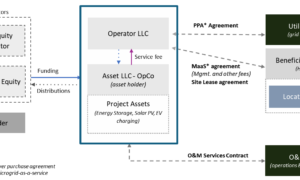Blockchain technology has revolutionized numerous industries by introducing decentralized systems that ensure transparency, immutability, and security. Among its groundbreaking applications, the tokenization of real-world assets stands out as a transformative innovation. This process involves converting physical assets, such as real estate, art, and commodities, into digital tokens on the blockchain. Thus, Tokenization not only democratizes access to valuable assets but also enhances their liquidity and enables fractional ownership.
What is Asset Tokenization?
Asset tokenization refers to the process of representing ownership rights of a physical or intangible asset as a digital token on a blockchain. These tokens are programmable, tradable, and divisible, making them a flexible medium for asset representation. By leveraging smart contracts, asset tokenization automates processes such as ownership transfer, dividend distribution, and compliance enforcement.
Examples of Tokenized Assets
- Real Estate: Investors can purchase fractions of properties, enabling smaller investments in high-value markets.
- Art and Collectibles: Rare artworks and collectibles can be tokenized, allowing art enthusiasts to own a share of masterpieces.
- Commodities: Precious metals like gold and silver are tokenized for easier trading and storage.
- Intellectual Property: Royalties from music, patents, or other IP rights can be distributed via tokens.
Benefits of Tokenization
Tokenizing real-world assets offers numerous advantages, transforming traditional industries and reshaping asset ownership models.
Enhanced Liquidity
Physical assets like real estate and fine art typically suffer from low liquidity. Tokenization changes this by breaking assets into smaller, tradeable units. In addition, Investors can buy or sell tokens in secondary markets, ensuring faster and more flexible transactions.
Fractional Ownership
Tokenization enables fractional ownership, allowing investors to own portions of high-value assets. For instance, a luxury property worth millions can be divided into thousands of tokens, making it accessible to a broader audience.
Transparency and Security
Blockchain’s immutable ledger records all transactions, ensuring transparency and reducing the risk of fraud. Smart contracts automate and enforce agreements, eliminating intermediaries and enhancing security.
Cost Efficiency
Traditional asset transactions often involve intermediaries like brokers, lawyers, and banks, leading to high costs. Tokenization minimizes these intermediaries, significantly reducing transaction fees.
Global Accessibility
Tokenized assets can be traded across borders without the complications of traditional financial systems. This global reach opens investment opportunities to a diverse audience.
Challenges in Asset Tokenization
Despite its potential, tokenizing real-world assets comes with challenges that must be addressed for widespread adoption.
Regulatory Uncertainty
Different jurisdictions have varying regulations regarding digital assets, creating a fragmented legal landscape. Clear guidelines are essential to foster investor confidence and compliance.
Technological Integration
Integrating physical assets with blockchain technology requires robust systems for verifying and managing ownership. Additionally, Ensuring the authenticity of assets is a critical step in the tokenization process.
Market Maturity
The market for tokenized assets is still evolving. Building liquidity and trust requires time, education, and the establishment of trusted platforms.
Security Concerns
While blockchain technology is secure, the platforms and wallets used to store and trade tokens remain vulnerable to cyberattacks. Strengthening cybersecurity measures is paramount.
Use Cases of Tokenized Assets
Tokenization is already making waves across various industries. Here are some real-world applications:
Real Estate Investment
Tokenization enables investors to buy and sell fractions of properties without the need for traditional financing. For instance, individuals can own a share of a luxury apartment in New York or a villa in Tuscany without purchasing the entire property.
Art and Collectibles
Platforms are emerging that allow users to invest in tokenized art and collectibles. Furthermore, This not only democratizes access to high-value assets but also provides artists with new revenue streams.
Supply Chain Management
Tokenized commodities like gold and diamonds can enhance supply chain transparency. Hence, By recording each step of the journey on the blockchain, stakeholders can verify authenticity and ethical sourcing.
Renewable Energy
Tokenization allows individuals to invest in renewable energy projects like solar farms or wind turbines. Thus, Investors receive tokens representing their share of the project and its revenue.
How Tokenization Works
Tokenization involves several key steps:
- Asset Valuation: The physical asset is appraised to determine its value.
- Token Creation: Digital tokens are generated to represent the asset. Each token signifies a fraction of ownership.
- Legal Framework: Contracts are created to ensure compliance with regulatory requirements.
- Platform Selection: Tokens are listed on a blockchain platform for trading and management.
- Investor Participation: Investors purchase tokens, gaining partial ownership of the asset.
The Role of Smart Contracts
Smart contracts are integral to the tokenization process. These self-executing contracts automate key functions like ownership transfer, dividend distribution, and compliance enforcement. In addition, By reducing the need for intermediaries, smart contracts streamline transactions and lower costs.
The Future of Asset Tokenization
The tokenization of real-world assets is poised to reshape industries by bridging the gap between physical and digital economies. As blockchain technology evolves, tokenization is expected to become more accessible and secure, unlocking immense value across sectors.
Key Trends to Watch
- Increased Adoption: Institutional investors are showing interest in tokenized assets, driving mainstream acceptance.
- Improved Regulations: Governments and regulatory bodies are working towards clearer guidelines to support the growth of tokenized markets.
- Technological Advancements: Innovations in blockchain scalability and interoperability will enhance tokenization processes.
- Expansion of Asset Classes: Beyond traditional assets, tokenization is likely to encompass emerging sectors like virtual real estate and carbon credits.
Conclusion
The tokenization of real-world assets represents a paradigm shift in how we perceive and interact with physical assets. By leveraging blockchain technology, tokenization democratizes access, enhances liquidity, and ensures transparency.Additionally, While challenges remain, ongoing advancements in regulation, technology, and market development are paving the way for a future where tokenized assets become the norm. Furthermore, This revolutionary approach has the potential to unlock new opportunities for investors and asset owners alike, fostering a more inclusive and efficient global economy.



































